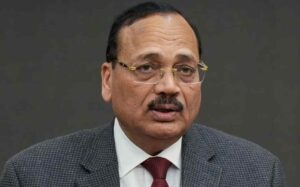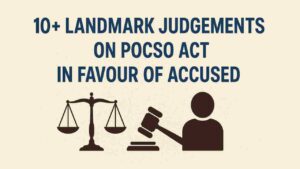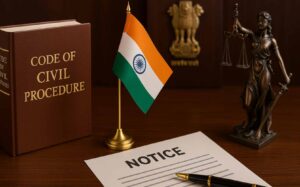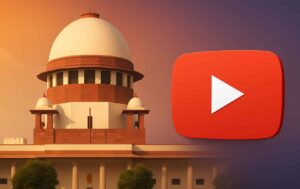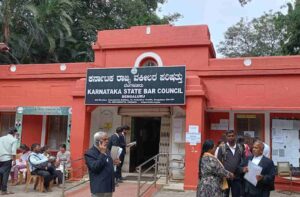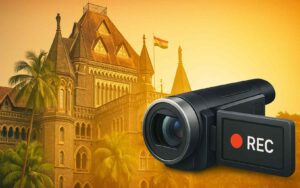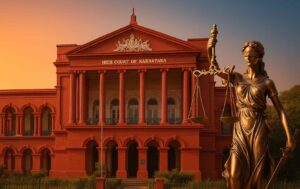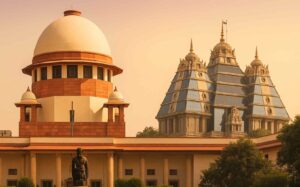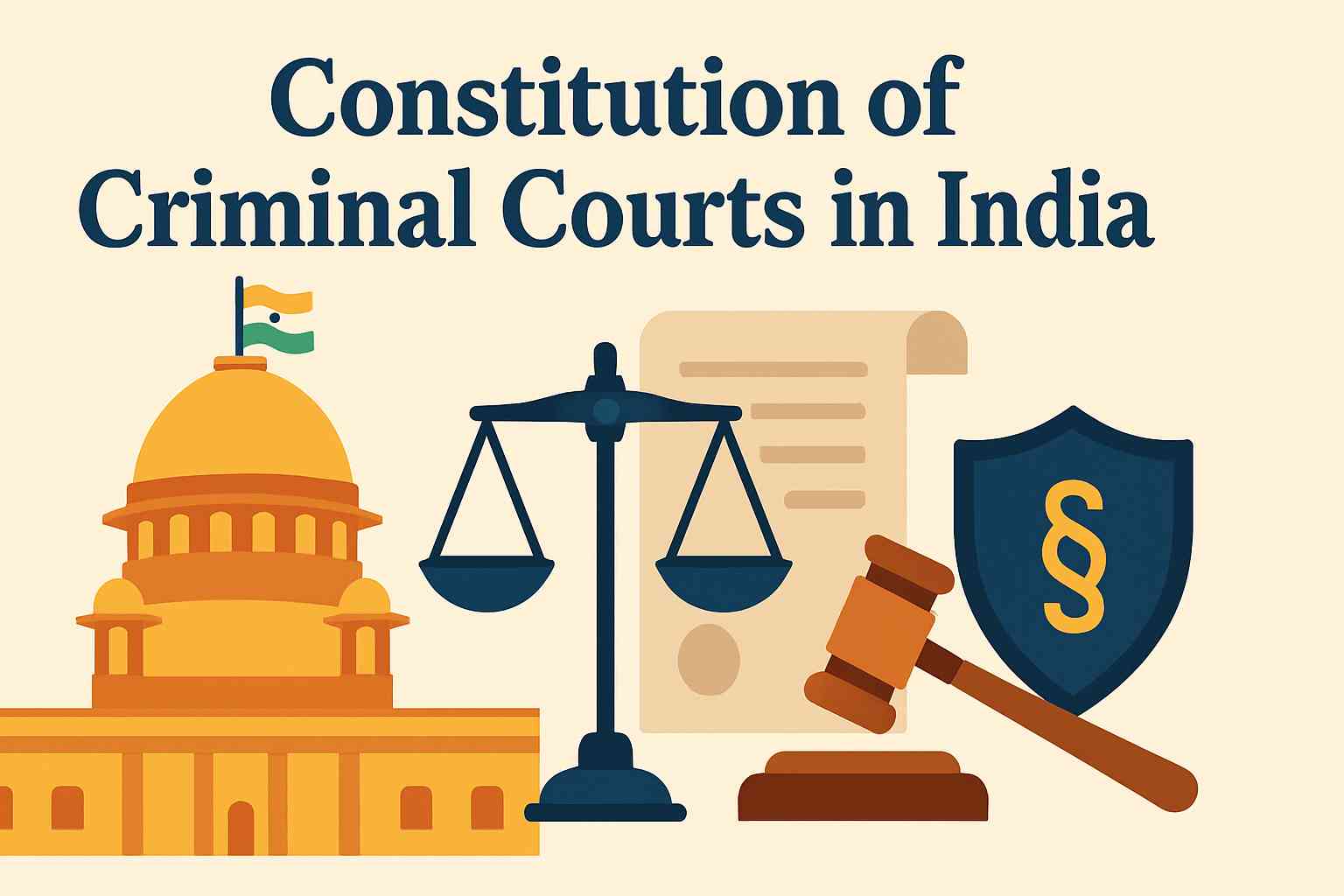The Constitution and powers of criminal courts in India define a hierarchical structure from Magistrates to the Supreme Court. Each court holds specific jurisdiction and sentencing authority under the Bharatiya Nagarik Suraksha Sanhita, ensuring effective administration of criminal justice across all levels.
India’s criminal justice system is structured on a well-defined hierarchy of courts, each established under constitutional or statutory provisions to handle various stages of criminal adjudication.
The system ensures that justice is not only accessible but also effectively administered across the country. At the apex of this judicial framework is the Supreme Court of India, the highest authority in both civil and criminal matters.
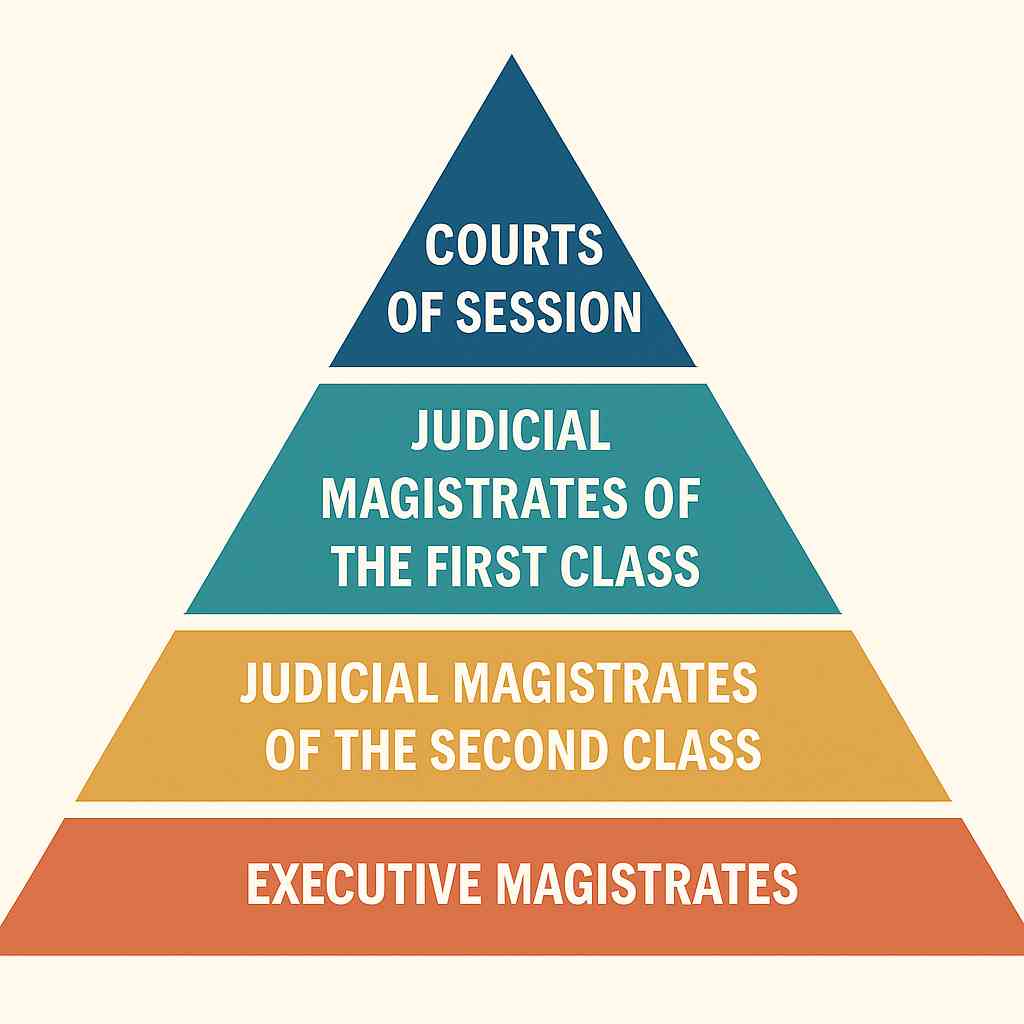
Beneath it lie the High Courts, functioning as the supreme judicial bodies at the state level. Together, they oversee the functioning of subordinate criminal courts under the Bharatiya Nagarik Suraksha Sanhita (BNSS), 2023, the modern legislation that replaced the Code of Criminal Procedure (CrPC).
The constitution and classification of criminal courts, ranging from Sessions Courts to Magistrates of varying classes, are guided by statutory provisions laid out in Sections 6 to 20 of BNSS, 2023. These courts are not only defined by their rank and territorial jurisdiction but also by their powers to try offences, impose sentences, and supervise judicial processes.
Each class of court has a specific scope of authority, such as the power to try serious offences, award sentences of imprisonment, impose fines, and, in limited cases, adjudicate on matters of preventive justice.
In addition to the courts, the criminal justice system includes key prosecutorial roles such as Public Prosecutors and Assistant Public Prosecutors, who are essential for ensuring effective criminal trials.
Their functions are governed by strict eligibility criteria and oversight mechanisms provided under BNSS. Executive Magistrates also play a vital role in maintaining law and order, although their powers differ from those of judicial authorities.
This comprehensive structure, guided by constitutional mandates and the BNSS framework, aims to deliver fair, efficient, and accountable criminal justice to all citizens of India.
Constitution of Criminal Courts in India
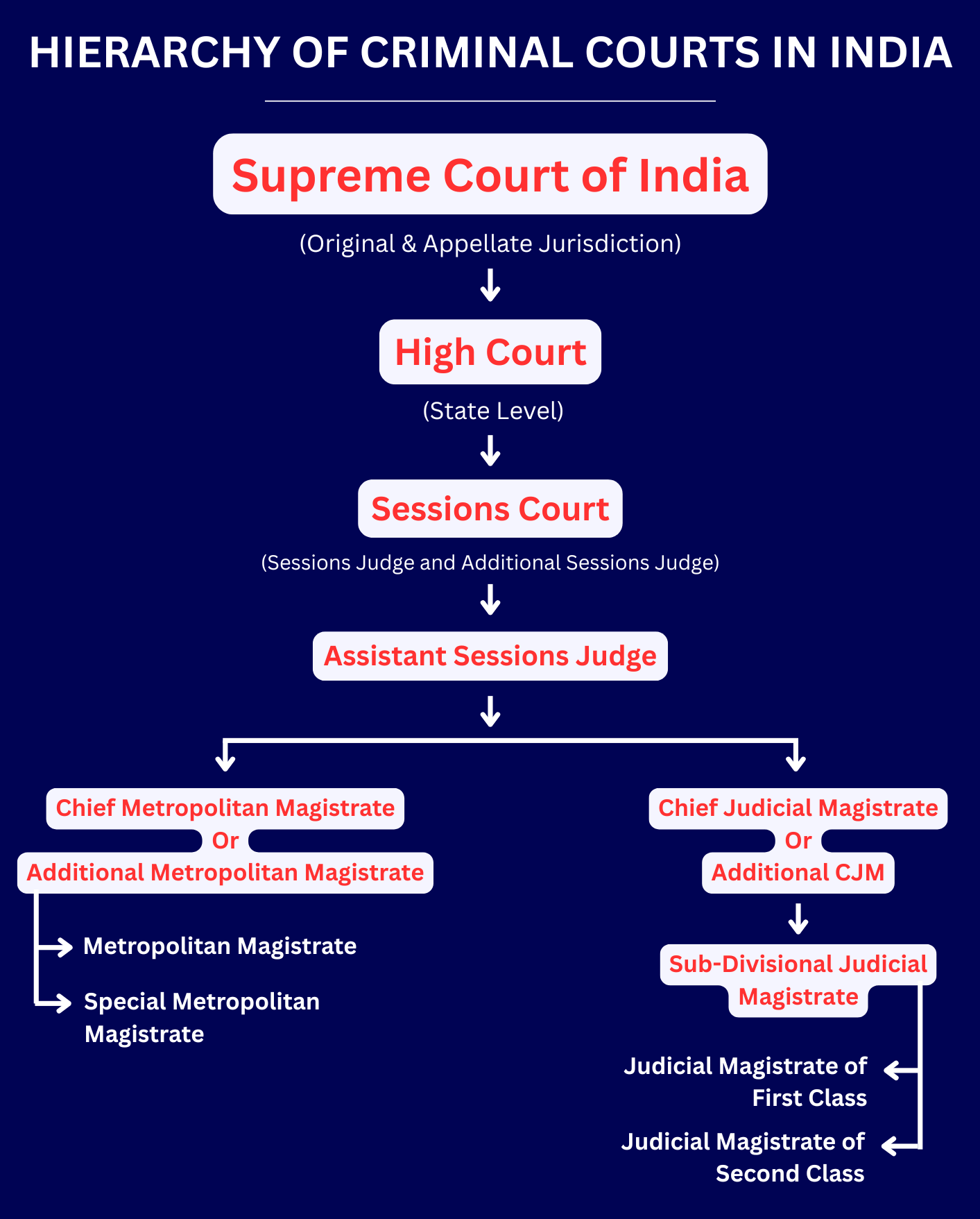
Supreme Court of India
- Established Under: Article 124 of the Constitution of India
- Location: New Delhi (the only Supreme Court in India)
The Supreme Court is the highest judicial authority in the country and serves as the final court of appeal in criminal as well as civil matters. While the Bharatiya Nagarik Suraksha Sanhita (BNSS), 2023 governs subordinate criminal courts and procedures, the Supreme Court’s jurisdiction over criminal matters remains rooted in constitutional provisions.
Powers and Functions in Criminal Matters:
- Final Appellate Authority: It hears criminal appeals from High Courts and other tribunals, especially in cases involving death sentences or constitutional interpretation.
- Article 136 – Special Leave Petition (SLP): The Supreme Court may, in its discretion, grant special leave to appeal against any judgment, decree, or order from any court or tribunal in India (except military tribunals), including criminal cases.
- Interpretation of Criminal Laws: The Court plays a central role in interpreting laws such as BNSS, IPC, and CrPC, ensuring their compliance with the Constitution.
- Article 32 – Enforcement of Fundamental Rights: Any citizen whose fundamental rights (e.g., protection against unlawful arrest or detention) are violated may directly approach the Supreme Court.
- Original Jurisdiction: Though not typically used for criminal trials, the Supreme Court may entertain matters directly affecting two or more States or enforcement of constitutional rights.
- Advisory Jurisdiction (Article 143): The President may seek the Court’s opinion on complex legal questions, including those pertaining to criminal law or public order.
- Review and Curative Jurisdiction: The Supreme Court has the power to review or reconsider its own judgments, particularly in criminal cases involving life or death.
High Courts
- Established Under: Article 214 of the Constitution
- Presence: Each State or group of States/UTs has its own High Court.
High Courts are the highest judicial authorities at the State level, and they play a dual role, as a constitutional court and as a court of criminal appeal and revision. Unlike the Supreme Court, High Courts are directly involved in the administration of criminal justice under BNSS.
Role under BNSS, 2023:
Administrative Functions (Under Sections 8 to 13 of BNSS):
Appointment of Judges:
- Appoints Sessions Judges and Additional Sessions Judges (Section 8).
- Appoints Judicial Magistrates of First and Second Class (Section 9).
- Appoints Chief Judicial Magistrates (CJM), Additional CJMs, and Sub-divisional Judicial Magistrates (Section 10).
- May appoint Special Judicial Magistrates for specific cases (Section 11).
Supervisory Authority:
- Exercises general control over all subordinate courts (Sessions Courts, CJMs, Magistrates).
- May define jurisdictional limits and allocate business among Magistrates (Sections 12 and 13).
Judicial Functions:
Appellate Jurisdiction:
- Hears criminal appeals against decisions of Sessions Courts and Magistrates.
- Mandatory appeals in serious cases (e.g., death penalty, life imprisonment).
Revisional Powers:
- Can examine the legality, correctness, or propriety of any criminal court order (suo motu or on application).
Writ Jurisdiction under Article 226:
- High Courts can issue writs like habeas corpus, mandamus, etc., in cases of illegal detention or violation of legal rights in criminal processes.
Transfer and Consolidation of Cases:
- May transfer criminal cases from one court to another within the State to ensure a fair trial.
Other Significant Powers:
- Contempt Jurisdiction: High Courts can punish individuals for contempt of court that interferes with the administration of justice.
- Framing of Rules and Practice Directions: High Courts may frame procedural rules for the conduct of criminal cases in subordinate courts.
CLASSES OF CRIMINAL COURTS (Section 6)
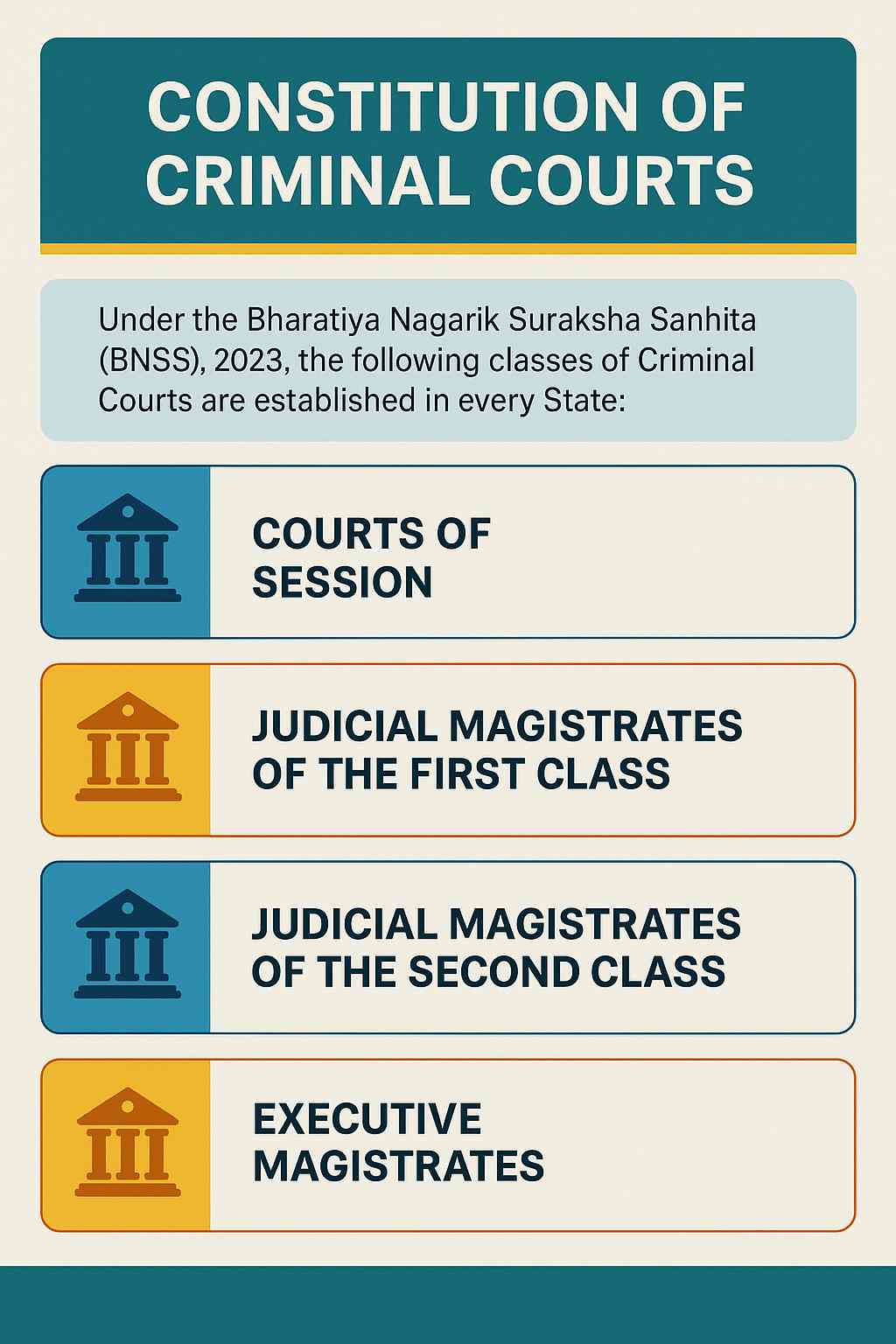
Section 6 classifies the courts dealing with criminal cases in each State, apart from High Courts and courts set up under other laws.
These are:
- Courts of Session
- Judicial Magistrates of the First Class
- Judicial Magistrates of the Second Class
- Executive Magistrates
Each class has specific powers, jurisdiction, and functions, forming a hierarchical and functional structure within the criminal justice system.
TERRITORIAL ORGANIZATION OF COURTS (Section 7)
Sessions Divisions and Districts:
- Each State must be a Sessions Division or divided into multiple Sessions Divisions.
- Each Sessions Division is considered a district or includes districts.
Powers of State Government (in consultation with the High Court):
- Alter boundaries or the number of divisions and districts.
- Sub-divide districts into subdivisions.
- Existing administrative units remain valid unless redefined.
COURT OF SESSION (Section 8)
Establishment:
- The State Government must set up a Court of Session in every Sessions Division.
Appointments:
- The High Court appoints the Sessions Judge.
- It may also appoint Additional Sessions Judges.
Powers and Functioning:
- An Additional Sessions Judge can function in other divisions if directed.
- In case of a vacancy, urgent matters may be handled by:
-
-
- Another Additional Sessions Judge, or
- A Chief Judicial Magistrate (CJM)
-
-
- Sessions Court usually sits where specified by the High Court, but may relocate for the convenience of the parties and witnesses.
- The Sessions Judge can:
-
-
- Allocate work among the Additional Judges.
- Arrange for urgent applications in his absence.
-
-
Clarification: “Appointment” here doesn’t include first-time postings or promotions made by the Government under service rules.
COURTS OF JUDICIAL MAGISTRATES (Section 9)
Establishment:
- State Government, after consulting the High Court, sets up:
- Judicial Magistrates of First and Second Class
- Special Courts of Judicial Magistrates for specific cases or local areas
Appointments:
- All Judicial Magistrates are appointed by the High Court.
- Powers of Judicial Magistrates may also be granted to civil court judges from the State’s Judicial Service.
CHIEF AND SUB-DIVISIONAL JUDICIAL MAGISTRATES (Section 10)
- The High Court must appoint a Chief Judicial Magistrate (CJM) in every district.
- It can also appoint Additional CJMs and Sub-divisional Judicial Magistrates (SDJM).
- SDJMs supervise other Magistrates within their sub-divisions under the general control of the CJM.
SPECIAL JUDICIAL MAGISTRATES (Section 11)
- On request from the State or Central Government, the High Court can grant powers of Judicial Magistrates to qualified individuals (serving/retired government officers).
- Appointed as Special Judicial Magistrates for up to 1 year at a time.
LOCAL JURISDICTION OF JUDICIAL MAGISTRATES (Section 12)
- Defined by the CJM.
- A Special Judicial Magistrate can hold court anywhere within their jurisdiction.
- If a Magistrate’s jurisdiction spans multiple districts, references to “CJM” or “Sessions Court” apply based on where the magistrate is functioning.
SUBORDINATION OF JUDICIAL MAGISTRATES (Section 13)
- All Judicial Magistrates are subordinate to the Chief Judicial Magistrate.
- The CJM is subordinate to the Sessions Judge.
- CJM has power to distribute cases among subordinate magistrates.
EXECUTIVE MAGISTRATES (Section 14)
Appointments:
State Government appoints:
- Executive Magistrates
- One of them as District Magistrate (DM)
- Additional District Magistrates (ADM) and Sub-divisional Magistrates (SDM)
Special Provisions:
- When the DM’s office is vacant, a temporary officer may exercise DM’s powers.
- Executive powers may also be granted to Commissioners of Police under existing laws.
SPECIAL EXECUTIVE MAGISTRATES (Section 15)
- Appointed for specific tasks or areas.
- Can include senior police officers.
- Granted defined powers of an Executive Magistrate.
LOCAL JURISDICTION OF EXECUTIVE MAGISTRATES (Section 16)
- Defined by the District Magistrate.
- If not defined, jurisdiction extends throughout the district.
SUBORDINATION OF EXECUTIVE MAGISTRATES (Section 17)
- All Executive Magistrates report to the District Magistrate.
- In subdivisions, they are also under the Sub-divisional Magistrate.
- The DM manages distribution of duties.
PUBLIC PROSECUTORS (Section 18)
Appointments:
- Central/State Government, after consulting the High Court, appoints:
- Public Prosecutors (PP)
- Additional Public Prosecutors (APP) for High Courts and District Courts
Conditions:
- In Delhi, only Central Government can appoint.
- In districts, District Magistrate prepares a panel in consultation with Sessions Judge.
- Only candidates in this panel or regular Prosecuting Officer Cadre may be appointed.
Eligibility:
- PP/APP: Minimum 7 years’ experience as an advocate
- Special PP: Minimum 10 years
Victim’s Rights:
Courts may allow victims to engage a private advocate to assist the prosecution.
ASSISTANT PUBLIC PROSECUTORS (Section 19)
- Appointed by State or Central Government to prosecute in Magistrates’ Courts.
- If none available, the District Magistrate can appoint any eligible person (with 14 days’ notice to the State).
- Restrictions:
-
-
-
- Police officers involved in the investigation cannot be APPs.
- Must be of Inspector rank or above.
-
-
-
DIRECTORATE OF PROSECUTION (Section 20)
Structure:
Optional establishment by the State Government:
- State Directorate: Director + Deputy Directors
- District Directorate: Deputy + Assistant Directors
Eligibility:
- Director/Deputy Director: 15 years’ legal experience or a former Sessions Judge
- Assistant Director: 7 years’ legal experience or a First Class Magistrate
Functions:
- Director: Monitors serious cases (10+ years punishment or capital offences), oversees appeals.
- Deputy Director: Monitors mid-level offences (7–10 years).
- Assistant Director: Monitors less serious offences (<7 years).
- All Prosecutors are under this hierarchy.
Note: Advocate General of the State is excluded from this control while acting as Public Prosecutor.
Powers of Courts under the Bharatiya Nagarika Suraksha Sanhita, 2023
Section 21: Courts by Which Offences are Triable
This section defines the types of courts authorized to try offences:
21(a): For offences under BNSS:
- High Court
- Court of Session
- Any other Court as specified in the First Schedule
- Proviso: Offences under Sections 64 to 71 (typically concerning crimes against women) should preferably be tried by a Court presided over by a woman.
21(b): For offences under any other law:
If a specific Court is mentioned in that law, the case must be tried by that Court.
If no Court is mentioned:
- High Court
- Any Court specified in the First Schedule
Section 22: Sentences by High Courts and Sessions Judges
- 22(1): High Courts can pass any sentence permitted by law, including the death penalty.
- 22(2): Sessions Judges and Additional Sessions Judges can also pass any sentence, but a death sentence requires confirmation from the High Court.
Section 23: Sentences by Magistrates
This section limits sentencing powers based on the magistrate’s rank:
Chief Judicial Magistrate:
Can impose any sentence except:
- Death
- Life imprisonment
- Imprisonment exceeding 7 years
Magistrate of First Class:
- Imprisonment up to 3 years
- Fine up to ₹50,000
- Both, or community service
Magistrate of Second Class:
- Imprisonment up to 1 year
- Fine up to ₹10,000
- Both, or community service
Explanation: Community Service is defined as unpaid public work ordered by the court for the benefit of society.
Section 24: Imprisonment in Default of Fine
A Magistrate may impose imprisonment if the fine is not paid.
Conditions:
- The imprisonment must be within the Magistrate’s sentencing limits (Section 23).
- If a substantive prison sentence is also imposed, the default imprisonment cannot exceed one-fourth of the maximum term that the Magistrate can award for the offence.
This imprisonment is in addition to the main sentence.
Section 25: Conviction for Multiple Offences at One Trial
When convicted of two or more offences at a single trial:
- The Court may impose separate punishments for each offence.
- Sentences can be concurrent (served together) or consecutive (served one after another).
Limitations on consecutive sentences:
- Cannot exceed 20 years total imprisonment.
- Cannot be more than twice the maximum punishment the court could impose for a single offence.
For appeals, consecutive sentences are considered a single sentence.
Section 26: Mode of Conferring Powers
Powers under BNSS can be conferred by:
- The High Court or
- The State Government
This can be done:
- By name, or
- By designation/office/class
Such powers become effective upon communication.
Section 27: Powers of Transferred Officers
If an officer holding judicial powers under BNSS is transferred or promoted to a similar post within the same local area:
- They retain those powers unless directed otherwise by the High Court or State Government.
Section 28: Withdrawal of Powers
Powers granted under BNSS may be withdrawn:
- By the High Court or State Government.
- Powers given by a Chief Judicial Magistrate or District Magistrate may be withdrawn by those respective authorities.
Section 29: Successor-in-Office
Powers and duties of a Judge or Magistrate may be carried out by their successor.
In case of doubt:
- Sessions Judge will determine the successor for Judges.
- Chief Judicial Magistrate or District Magistrate will determine the successor for Magistrates.
The successor is deemed to hold the powers for all BNSS purposes and ongoing proceedings.
Sentencing Powers of Criminal Courts in India
| Court Type | Max Imprisonment | Max Fine | Can Impose Death Penalty? |
|---|---|---|---|
| Supreme Court | No Limit | No Limit | ✅ Yes |
| High Court | No Limit | No Limit | ✅ Yes |
| Sessions Judge | No Limit | No Limit | ✅ Yes (with HC confirmation) |
| Addl./Asst. Sessions Judge | Up to 10 years | No Limit | ❌ No |
| Chief Judicial Magistrate (CJM) | Up to 7 years | No Limit | ❌ No |
| Judicial Magistrate First Class | Up to 3 years | ₹1,00,000 | ❌ No |
| Judicial Magistrate Second Class | Up to 1 year | ₹5,000 | ❌ No |
| Executive Magistrate | ❌ Not Applicable | ❌ Not Applicable | ❌ No |
Sentencing powers vary based on the rank and class of the court. Each court is empowered to pass a sentence only up to a specified limit, depending on its legal authority and designation.
Supreme Court of India
No statutory limit on sentencing power.
Can confirm, modify, or overturn any sentence, including:
- Death penalty
- Life imprisonment
- Long-term imprisonment
Often hears appeals against High Court convictions and sentences.
High Court
Unlimited sentencing power.
May:
- Impose or confirm death sentences
- Modify or reduce sentences passed by Sessions Courts or lower courts
- Exercise revisional and appellate powers
Court of Session (Sessions Court)
Highest trial court in a district.
Sessions Judge may pass:
- Any sentence authorized by law, including the death penalty
- Death penalty must be confirmed by the High Court
Additional Sessions Judge and Assistant Sessions Judge:
- Can impose any sentence except a death sentence
- Imprisonment up to 10 years
- Can also impose unlimited fines
Chief Judicial Magistrate (CJM)
May pass:
- Imprisonment up to 7 years
- Fine without any upper limit (subject to statute)
- Any other sentence authorized by law except death or life imprisonment
Judicial Magistrate First Class
May pass:
- Imprisonment up to 3 years
- Fine up to ₹1,00,000
- No authority to impose life imprisonment or death sentence
Judicial Magistrate Second Class
May pass:
- Imprisonment up to 1 year
- Fine up to ₹5,000
- Suitable for trying petty and less serious offences
Executive Magistrates
Do not try criminal offences in the traditional sense.
Have preventive and administrative powers, such as:
- Issuing orders under public nuisance, unlawful assemblies (e.g., Section 144 equivalent)
- Can direct detention in custody for preventive measures
Cannot impose sentences like imprisonment or fine in trial of offences
Verdict
The Constitution of Criminal Courts in India establishes a well-structured judicial hierarchy designed to administer criminal justice efficiently. Anchored in constitutional and statutory provisions, the system ranges from the Supreme Court, the apex judicial authority with unlimited sentencing power, to Magistrates and Executive Magistrates operating at the grassroots.
While the Supreme Court exercises appellate, advisory, and constitutional authority, High Courts oversee criminal justice within States, including appointments and case revisions under the Bharatiya Nagarik Suraksha Sanhita 2023. Subordinate courts such as Sessions Courts and Magistrates are categorized based on their sentencing powers, from handling capital punishment to minor offences.
The BNSS clearly defines their jurisdictions, functions, and the mechanism for appointing judicial and executive magistrates as well as public prosecutors. Sentencing powers scale with rank. Magistrates of the Second Class deal with petty offences, while Sessions Judges may try serious crimes including those punishable by death. Executive Magistrates play preventive and administrative roles without traditional sentencing authority.
This tiered framework ensures legal clarity, judicial accountability, and accessibility across India’s diverse jurisdictions. It serves as a cornerstone of the country’s criminal justice administration, balancing centralized oversight with localized judicial access, thereby strengthening the rule of law and safeguarding citizens’ rights.
Follow The Legal QnA For More Updates…

